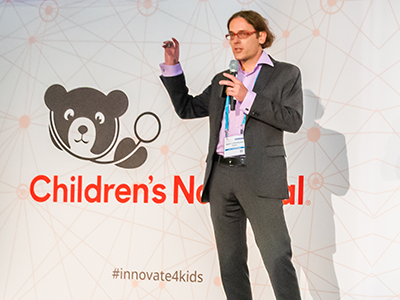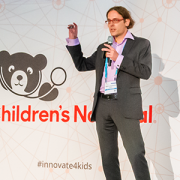Pediatric medical device pitch competition deadline extended

Pediatric innovators pitch for up to $250,000 in FDA-funded grant awards.
The National Capital Consortium for Pediatric Device Innovation (NCC-PDI) announced today that the application deadline for its annual “Make Your Medical Device Pitch for Kids!” competition is extended one week to Feb. 22 at midnight EST. Innovators and startup companies with devices in the pediatric cardiovascular, orthopedic and spine, or NICU sectors are invited to apply for a share of up to $250,000 in FDA-funded awards and access to a newly created NCC-PDI pediatric device accelerator program led by MedTech Innovator. Submissions are being accepted now.
Up to 30 companies will be selected for the first round of competition scheduled for March 23, 2020 at the University of Maryland, College Park. Up to 10 finalists chosen from that event will compete for up to $250,000 in grant awards in Toronto, Canada on October 4. Finalists also receive a spot in the MedTech Innovator 2020 Accelerator – Pediatric Track, which provides a customized curriculum and in-depth mentorship. Finalists will be announced in May, 2020.
This is the ninth competition in seven years hosted by NCC-PDI, one of five FDA Pediatric Device Consortia Grant Program members supporting the development and commercialization of pediatric medical devices. NCC-PDI is led by the Sheikh Zayed Institute for Pediatric Surgical Innovation at Children’s National Hospital and the A. James Clark School of Engineering at the University of Maryland. Additional consortium members include accelerators Medtech Innovator, BioHealth Innovation and design firm partner Archimedic.
“This year’s competition focuses on three medical device areas of critical need for pediatric patients, so we want to give innovators as much time as possible to prepare their submissions,” said Kolaleh Eskandanian, Ph.D., MBA, PMP, vice president and chief innovation officer at Children’s National Hospital and principal investigator of NCC-PDI . “Our goal is to support devices that will improve care for children by helping them advance on the pathway to commercialization. We have seen how this competition can provide significant momentum for pediatric innovations, so we want to encourage as much participation as possible.”
To date, NCC-PDI has mentored over 100 medical device sponsors to help advance their pediatric innovations, notes Eskandanian, with six devices having received either their FDA market clearance or CE marking. Along with the positive exposure of presenting at this competition, she notes that the success of NCC-PDI’s portfolio companies is attributed to funding, mentorship, support from partners and facilitated interactions between device innovators and potential investors.
Eskandanian notes that enhancing access to resources for pediatric innovators is one aim of the Children’s National Research & Innovation Campus, a first-of-its-kind campus focused on pediatric healthcare innovation, currently under development on the former Walter Reed Army Medical Center campus in Washington, D.C. With its proximity to federal research institutions and agencies, universities, academic research centers, as well as on site accelerator Johnson & Johnson Innovation – JLABS, the campus will create a rich ecosystem of public and private partners which, like the NCC-PDI network, will help bolster pediatric innovation and commercialization. Opening is scheduled for December 2020.







